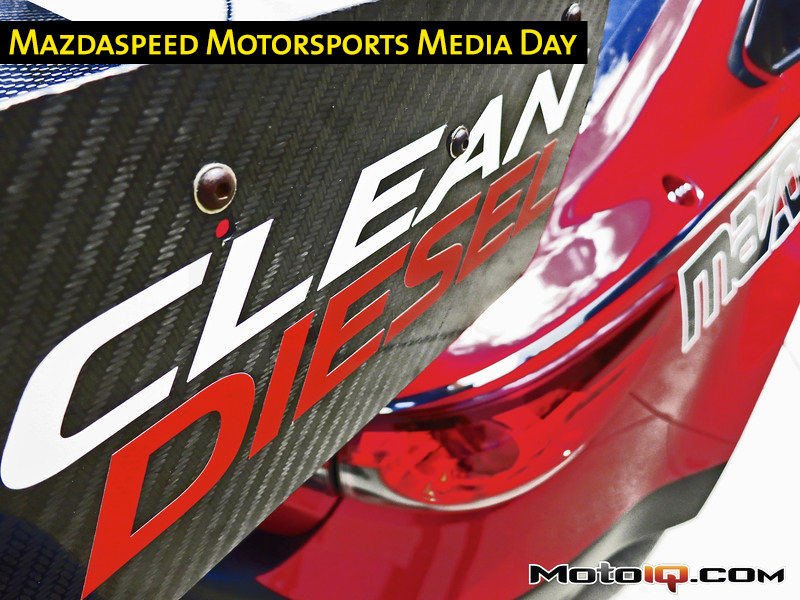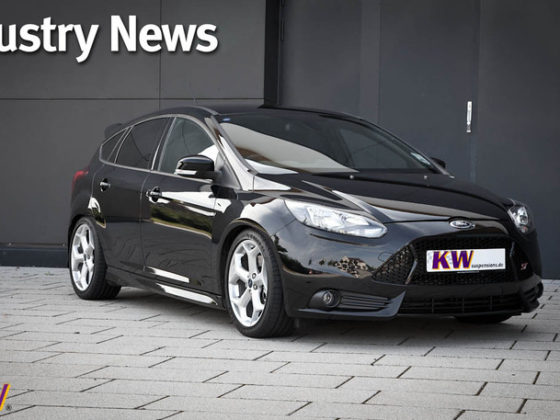,
 |
| The stock piston is on the right with the near final iteration on the left. |
The stock piston design from Mazda was pretty good off the bat. It even has the trick feature of a low-friction coating on the side skirt. However, the Motorsports version required changes to the bowl design to handle the increased air and fuel flow along with changes to the wrist pin geometry. In all, 14 major design iterations were made and put through simulation with seven actually being produced and tested in the engine. Even after finalizing major revision number 14, there were still a few minor changes made after that.
After some thermal fatigue issues with the pistons that cropped up at Daytona, the bowl geometry was revised further in conjunction with reducing the compression ratio. A ceramic thermal barrier coating was applied to the piston face to help keep the heat out. The last major revision was to the piston oil squirter jets to spray more oil and better cool the pistons. For any of you guys that want your engines to last more than a quarter mile at time at high power levels then don’t even think about removing the piston oil squirters from your engines (as some Honda guys are known to do). SpeedSource added an oil squirter to the existing one so that each piston had two squirters to get more oil to the pistons for cooling.
 |
The top fuel rail is a Bosch piece while the bottom rail is stock. Notice there are six ports on the Bosch fuel rail compared to five on the stock rail. If my memory serves me correctly, the Bosch rail uses two ports to feed the rail to provide more even fuel distribution for the four ports going to the injectors versus only one feed port on the stock rail having to get fuel distributed to the four injector ports. The primary fuel system components consisting of the pump, common rail, and injectors are all Bosch Motorsports components.
One of the challenges with the modern diesel is the extremely high fuel rail pressures. The rail pressure on the SKYACTIV-D race engine is somewhere around 35,000 psi. Due to the high fuel pressure, SpeedSource had issues with the fuel lines failing at the fittings. Another characteristic of diesels is vibration. Vibration has a way of making things break like fuel lines. Even though they designed a new fitting after Daytona for the race at Circuit of the Americas, they couldn't source it in time before the race. It just goes to show, that just because you can design something doesn't mean you can get it the next day; there is always a lead time associated with getting parts. Fuel line design improvements along with a fuel line damper reduced fuel line stress by 90%.
A new intake manifold had to be designed as the stock intake manifold would not fit in the car due to packaging. ANSYS Fluent 3D CFD simulation was first used to benchmark the stock intake manifold for mass flow rate and distribution. Next, the many iterations of the Motorsports intake manifold were designed. Considerations of runner length, taper, and angle were used to control tumble and swirl in the cylinder to get the best mixture of air and fuel. An interesting feature of the intake manifold is the use of runners for each individual intake port on the head; so there are eight runners on the intake manifold for this four cylinder engine. After determining the final design, the intake manifold was fabricated by Wilson Manifolds.
Another stock component surprisingly used is the water pump and drive pulley. SpeedSource benchmarked a number of aftermarket water pumps and found the OEM pump to actually outperform them. The thermostat cover was changed for packaging and durability considerations on the race car.
 |
| This is the stock water pump and drive pulley for the SKYACTIV-D street engine. The blue anodized elbow is the new thermostat cover. |
 |
| A mock-up of the SKYACTIV-D race engine from the 2012 LA Autoshow. |



